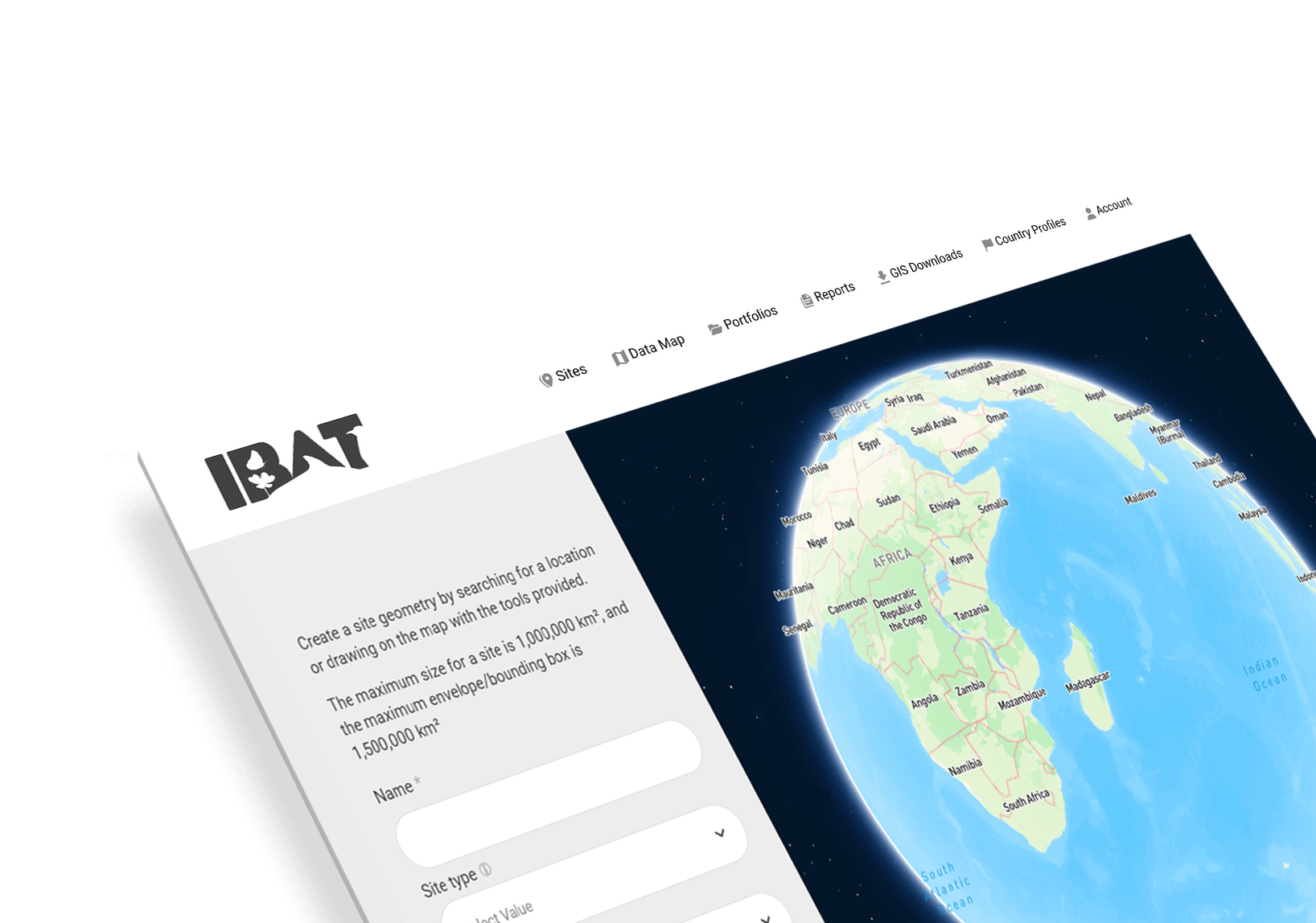How do I change my subscription?
Get in touch with the IBAT team who can guide you to the best subscription for your use case at ibat@ibat-alliance.org
Are subscriptions for a single user or multi-users?
All IBAT subscriptions can be used by multiple users including consultants working for your business. Please select ‘organisation’ instead of ‘personal’ account type. Once you’ve created an account go to ‘Manage Users’ to add sub-users to your organisation’s account.
How can I add colleagues or contractors to our organisation’s IBAT account?
To add other users to your subscription, click on the arrow beside your name in the top right-hand corner of the screen. Click ‘Organisation Dashboard’, then ‘Manage users’. Here you can add other users to your organisation’s IBAT account. Use the checkboxes to set whether the account is enabled and whether the user is an admin. If set as inactive, an account can be reactivated at any time.
What data are included in the GIS download?
PAYG GIS downloads (less than 1,000,000km2) include all three datasets (World Database on Protected Areas, World Database of KeyBiodiversity Areas, and IUCN Red Listed species polygons). A polygon request returns the full shapefile of the protected area, Key Biodiversity Area, or IUCN Red Listed species that intersects with that polygon instead a cropped subset of the data.
Global datasets available to Enterprise and Enterprise Plus subscribers include the World Database on Protected Areas and the World Database of Key Biodiversity Areas. For more information on the available GIS downloads please view the sample GIS downloads.
What is included in IBAT reports?
Each IBAT report varies in the way the data is displayed and interpreted. For more information on the available reports, their intended use cases and contents please view the sample reports.
How often are IBAT datasets updated?
Each dataset is updated at different frequencies. The World Database on Protected Areas is updated each month, the World Database of Key Biodiversity Areas is updated twice a year, and the IUCN Red List is updated two to three times a year.
How can I use the data?
Please see IBAT Terms of Use here.
Where does the money from the subscription go?
IBAT is an important cost recovery mechanism and IBAT subscriptions directly support the update and maintenance of three of the world’s most authoritative global datasets: the World Database on Protected Areas, the World Database of Key Biodiversity Areas, and the IUCN Red List of Threatened Species.
The annual cost of updating and maintaining these datasets is estimated at US$6.5 million. An additional US$114 million will be needed to reach baselines of data coverage for global biodiversity and conservation knowledge products.
Thank you for your support.
Why is the country that my site appears in shown as 'Not applicable'?
In order to determine the country that a site is located in, IBAT uses a layer provided by the UN Environment Programme World Conservation Monitoring Centre (UNEP-WCMC). This layer is a combination of the World Vector Shoreline (WVS) and Exclusive Economic Zones (EEZ) layers and is provided with the following disclaimer:
The designations employed and the presentation of material on this map do not imply the expression of any opinion whatsoever on the part of the Secretariat of the United Nations concerning the legal status of any country, territory, city or area or of its authorities, or concerning the delimitation of its frontiers or boundaries.
When do I need to get an IBAT license and how can I use it for reporting?
The IBAT Alliance partners define commercial use as “a) any use by, on behalf of, or to inform or assist the activities of, a commercial entity (an entity that operates 'for profit') or b) use by any individual or non-profit entity for the purposes of revenue generation.” This definition is consistent across the three IBAT Alliance partner’s datasets – the WDPA, the WDKBA and the IUCN Red List of Threatened Species.
All three partners direct organisations who would fall under commercial use to access the data through the IBAT platform, rather than directly through the Protected Planet website for example. In this case, any company that wishes to use protected areas, Key Biodiversity Areas or IUCN Red List of Threatened Species data when performing their materiality assessment and disclosing their sustainability statement in alignment with various reporting, standards and frameworks such as the European Sustainability Reporting Standards (ESRS) and Taskforce for Nature Related Disclosures (TNFD) would be considered commercial use, and will be directed to access the data through the IBAT platform.
However, companies do not need an IBAT license (ie. subscription) in order to use any of the aforementioned data for reporting purposes. IBAT is free for all users to create an account, and access IBAT’s biodiversity information. IBAT subscriptions allow users to access advanced functionality such as bespoke risk screening reporting, but are not a prerequisite to using the data for reporting purposes. As such, any company can use protected areas for the identification of relevant sites – the only prerequisite is that this information is accessed through the IBAT platform (either freely, or via a subscription), rather than the Protected Planet website. The version of the WDPA that is available on the Protected Planet website is only available for non-commercial use, while the version of the WDPA hosted on IBAT is appropriate for use by commercial organisations.
Feel free to reach out to the IBAT team to find our more at ibat@ibat-alliance.org.
Still have questions?
We're here to help you

Learn how IBAT can transform your relationship with data and support your nature-positive goals

